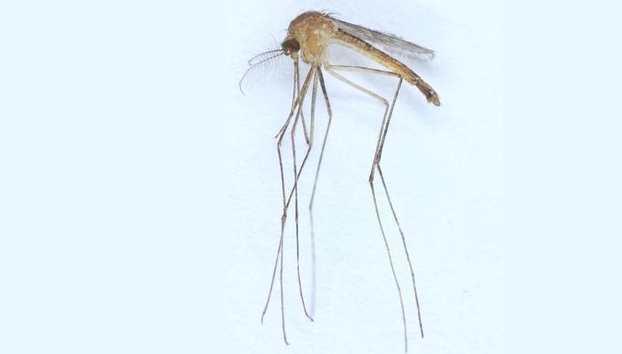Mosquito known to carry West Nile virus found in Finland
Published : 30 Jun 2023, 01:23
Updated : 30 Jun 2023, 01:26
The mosquito species Culex modestus has been found in Finland for the first time, said the University of Helsinki in a press release on Thursday.
In Southern Europe it is known to spread West Nile virus, but it is highly unlikely for the disease to occur in Finland, said the press release, referring to researcher Lorna Culverwell of the Department of Virology at the University of Helsinki., who discovered the mosquitoes.
A species of mosquito not previously recorded from Finland has been discovered in the coastal municipality of Pori.
Culex modestus has become the 44th mosquito species found in Finland, and the northernmost record of the species in Europe. The previous findings closest to Finland, but further south, have been made in the Leningrad Province in Russia and in Skåne in Sweden.
The new species was found amongst mosquito samples collected by Culverwell in summer 2022 in the coastal areas of Finland. One male specimen was identified after examining the genitalia and performing a DNA analysis.
“Only one specimen of this species was found, but I believe it to be unlikely that it would be the only one of its species in Finland,” said Culverwell.
According to Culverwell, this discovery is an important addition to the mosquitoes recorded from Finland. Up-to-date knowledge about the different mosquito species and their distributions increases our understanding of which, if any, potential pathogens ( viruses or parasites), the mosquitoes could spread now or in the future.
Culex modestus is known to spread West Nile virus, a flavivirus, in southern Europe, between birds and humans or birds and horses. In most human cases West Nile virus causes a mild infection with symptoms such as fever, headache and muscle pain. In some cases, the virus may cause neurological disease. For now, West Nile virus has not been discovered in Finland.
“Finns shouldn't be concerned about this mosquito discovery at this point. To date, no infections acquired in Finland have been discovered in humans or horses, but this finding is a reminder that we should be aware of which mosquito species are here. Knowing potential mosquito-borne diseases that these species are linked to elsewhere in the world helps us to better investigate how likely it would be for these infections to occur in the future,” said Culverwell.
Several mosquitoes in genus Culex maintain West Nile virus in bird populations, including Culex pipiens and Culex modestus. For transmission to humans to occur, usually a mosquito would first have to bite a bird carrying the virus, wait several days for the virus to enter their saliva, and then bite a human when they are infected. Sometimes the virus is inherited from female mosquitoes via their eggs.
“At present it is very unlikely for transmission of the virus to humans or horses as several species are required for a disease transmission cycle to occur. Firstly, there would need to be West Nile virus already present in the local or migratory birds in Finland. No virus has so far been reported, despite small scale screening of birds at some sites in Finland. Secondly, only one specimen of Culex modestus is so far known from one location in Finland. For transmission to occur, larger numbers of mosquitoes would be needed for the possibility of some of them to meet any infected birds, and then survive to bite any humans or horses several days afterwards,” said Culverwell.
Culverwell has collected more than 111,000 mosquito samples in Finland since 2012. According to her, it is uncertain how long Culex modestus has potentially occurred in Finland. It is also still unknown whether the area of discovery has a more established population of Culex modestus mosquitoes.
According to Culverwell, further research is now required on both bird and mosquito populations to assess both the short-term and long-term impacts of the discovery.
The study was published online ahead of print in the scientific Journal of the European Mosquito Control Association on 25th June 2023.


